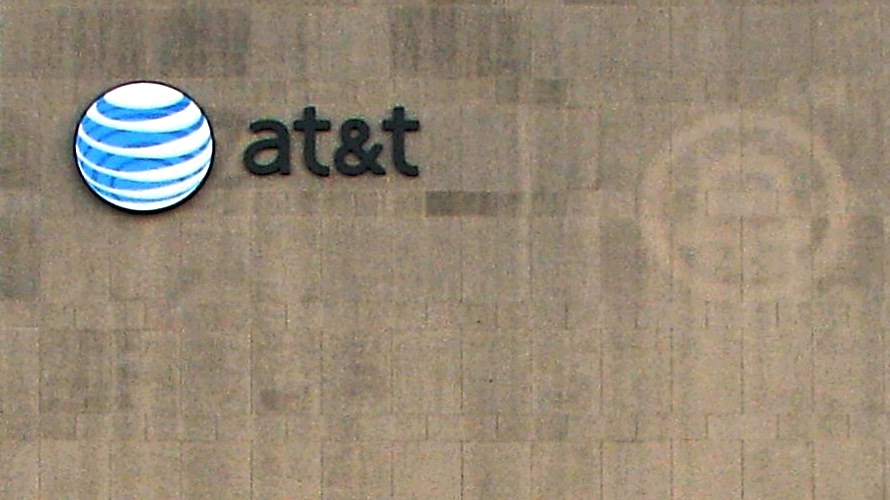Telecom & Wireless
The Bullish and Bearish Case for AT&T in 2015
Published:
Last Updated:
The Dow Jones Industrial Average posted gains of 7.5% in 2014, while the S&P 500 Index rose by 11.4%. Those gains are not inclusive of dividends, but AT&T Inc. (NYSE: T) closed out the year at $33.59, for an annual gain of only 0.66%, including its dividend adjustments. The bull market is nearly six years old now, and some investors may be concerned that AT&T’s stock is stuck in a long-term trading range at a time when growth looks elusive. 24/7 Wall St. has taken a look at the bullish and bearish case to evaluate both sides of the coin and see what lies ahead for AT&T in 2015.
Shares had a trading range of $31.74 to $37.48 in 2014, and the consensus analyst price target of $34.90 would imply upside of 3.9% this year. Then there was the 31st annual dividend increase, which moved the dividend yield to 5.6%, to consider. AT&T has a massive market cap of $174 billion, and it is in the midst of making acquisitions.
One major consideration for the year ahead is that AT&T is one of the targets, along with Verizon Communications Inc. (NYSE: VZ), in a major price and service war with Sprint Corp. (NYSE: S) and T-Mobile US Inc. (NYSE: TMUS). If you want to know how price wars impact companies that are the industry leaders, generally speaking it is far less than good — and AT&T and Verizon share the same price war woes in earnings. One analyst recently showed how cannibalization is taking effect in the price wars. While AT&T rose only 0.5% in 2014, Verizon’s shares were down by 0.5% or so.
ALSO READ: The Bullish and Bearish Case for Cisco in 2015
AT&T is expected to have capital spending of $18 billion or so in 2015. The company has another thing going for it: it has the highest dividend yield of all Dow stocks. This yield at least aims to keep investors happy. The problem here, on top of the price war, is that AT&T is expected to post revenue growth of less than 3% for both 2014 and 2015. That being said, there are the DirecTV (NASDAQ: DTV) acquisition ambitions, followed by a smaller $2.5 billion acquisition of the Mexican wireless company Iusacell for $2.5 billion.
The chart has been stuck for AT&T. Its five-year chart shows that AT&T shares have traded between $32 and $37 for about 90% of the time for most of the past three years. Still, the price-to-earnings ratio ahead of about 13 is trading under the broad market and under the average of the utilities sector. That and the high dividend may offer a cushion under the shares in 2015, assuming that the company can live up to its earnings expectations in 2015 and beyond.
Until we have the pending deals closed, or the verdict of those deals formalized, AT&T could arguably find itself in a holding pattern. And Sprint and T-Mobile seem more than willing to keep losing money to steal market share from the wireless giants. In early November, AT&T said:
AT&T will provide guidance on the pro-forma financial impacts of its DIRECTV and Iusacell acquisitions when those deals close. Upon completion of both deals, AT&T’s revenues will be more diversified across services and geographies.
With a dividend-adjusted performance of 0.66% in 2014, versus an expected 5.5% gain a year ago, AT&T’s total upside with the dividend included is expected to be 9.5%. And for a what-if scenario: AT&T’s highest analyst price target is up at $40. If that were to come about, AT&T could rise 20% from the end of 2014 — plus there is the super-high dividend to add in to the mix.
ALSO READ: The Bullish and Bearish Case for Coca-Cola in 2015
Are you ready for retirement? Planning for retirement can be overwhelming, that’s why it could be a good idea to speak to a fiduciary financial advisor about your goals today.
Start by taking this retirement quiz right here from SmartAsset that will match you with up to 3 financial advisors that serve your area and beyond in 5 minutes. Smart Asset is now matching over 50,000 people a month.
Click here now to get started.
Thank you for reading! Have some feedback for us?
Contact the 24/7 Wall St. editorial team.